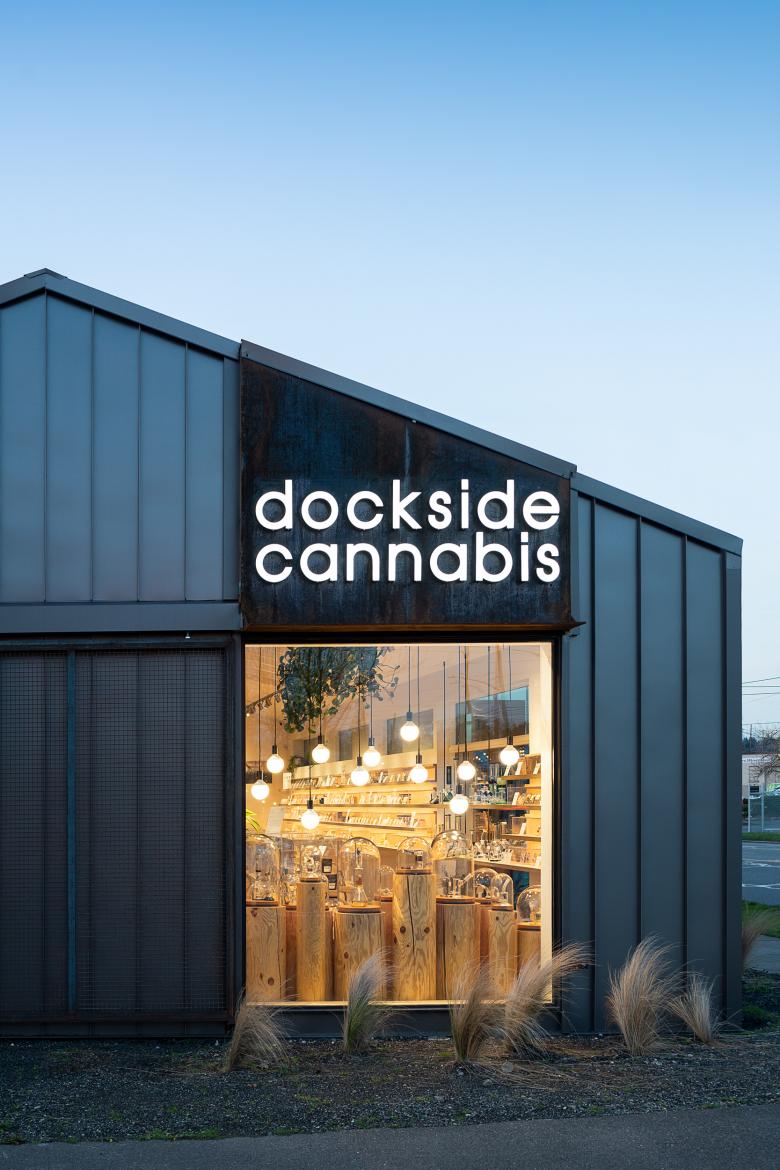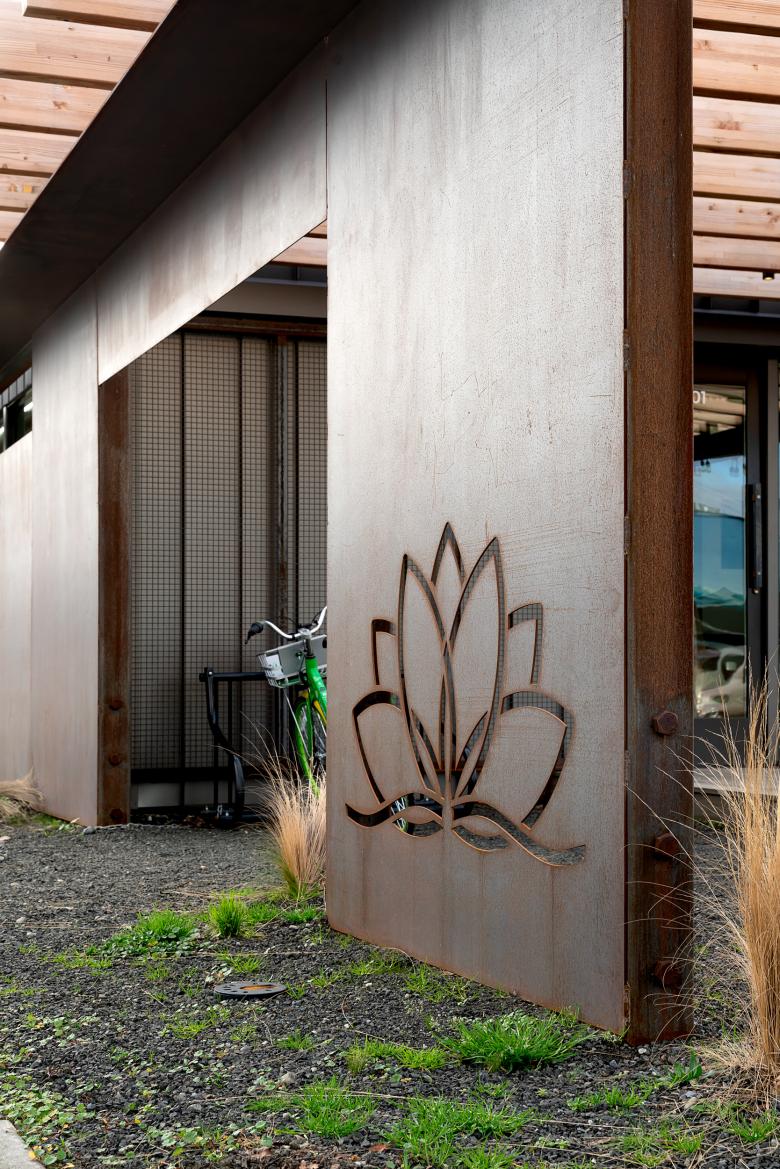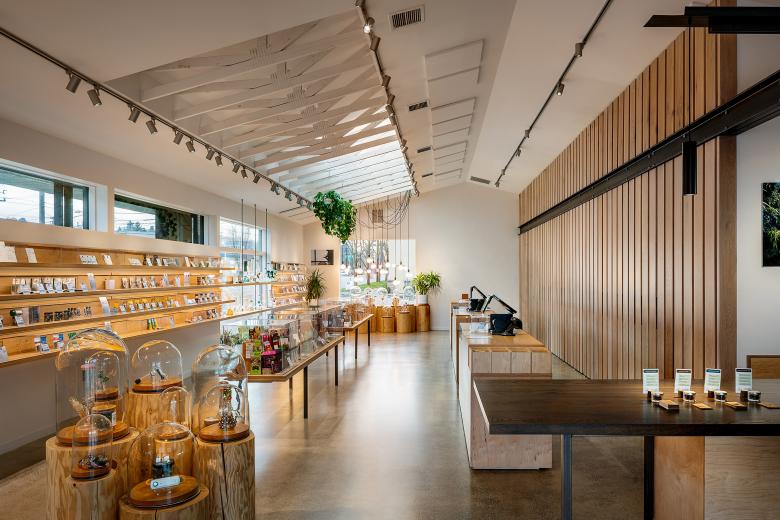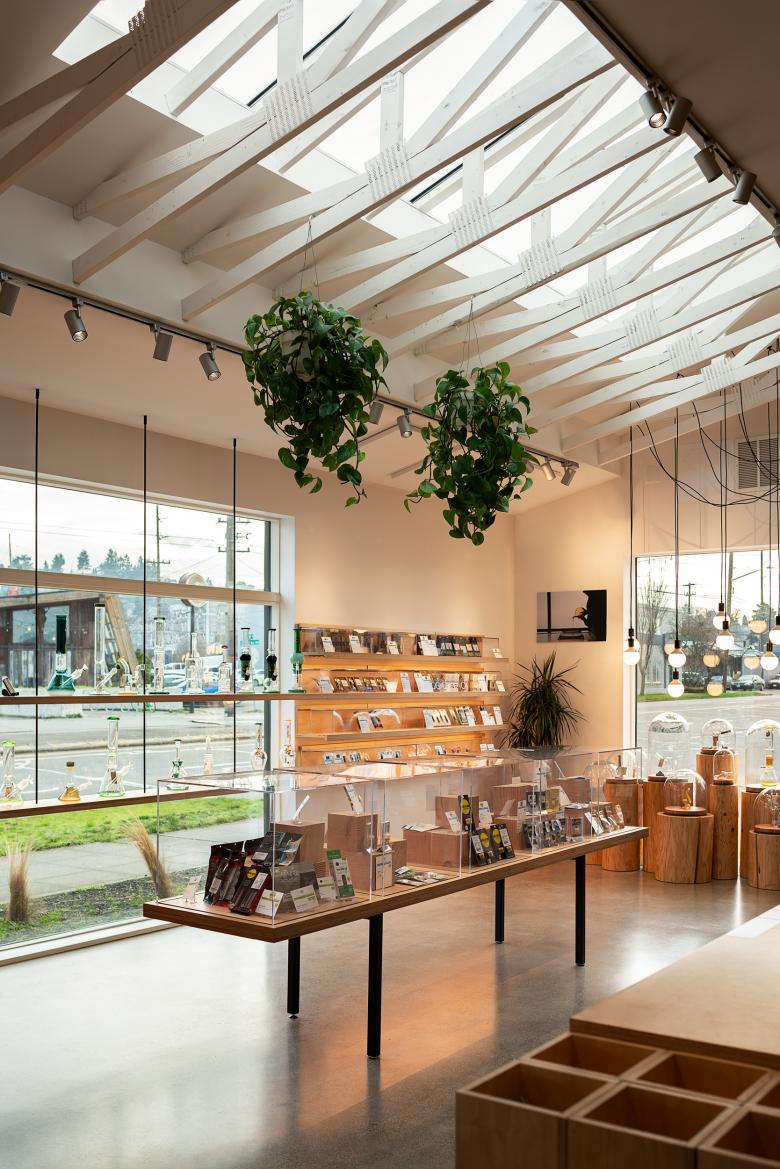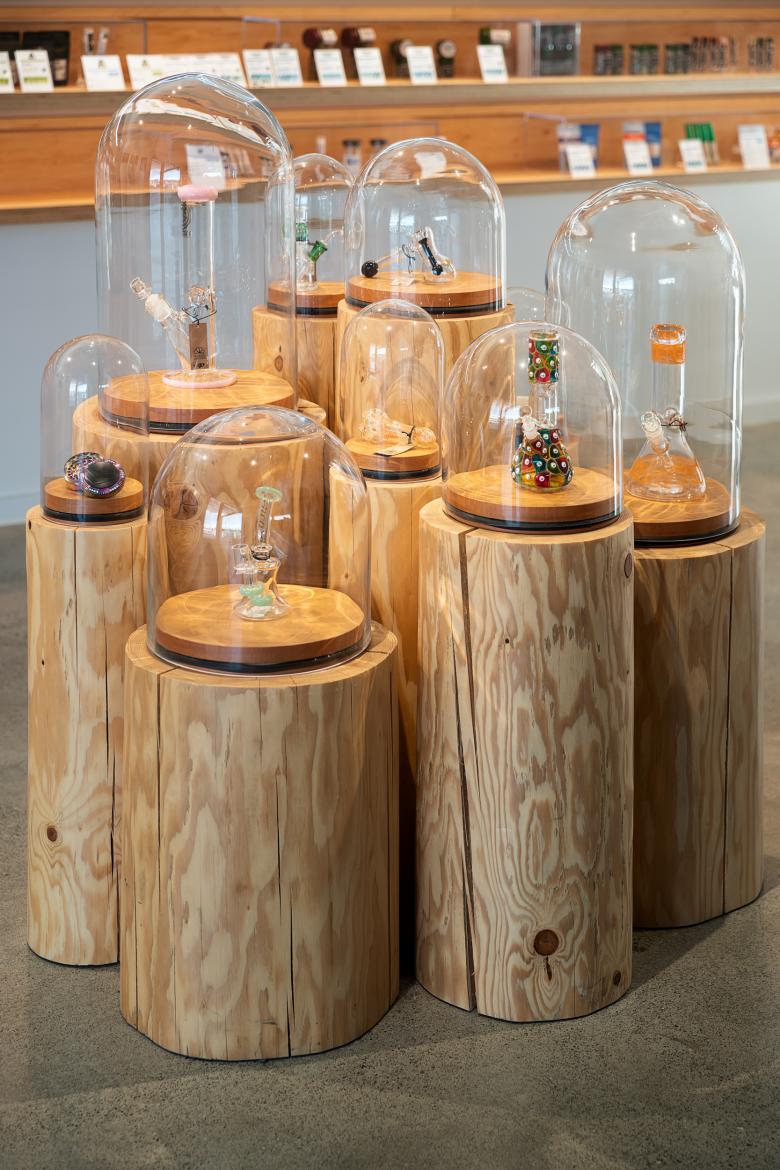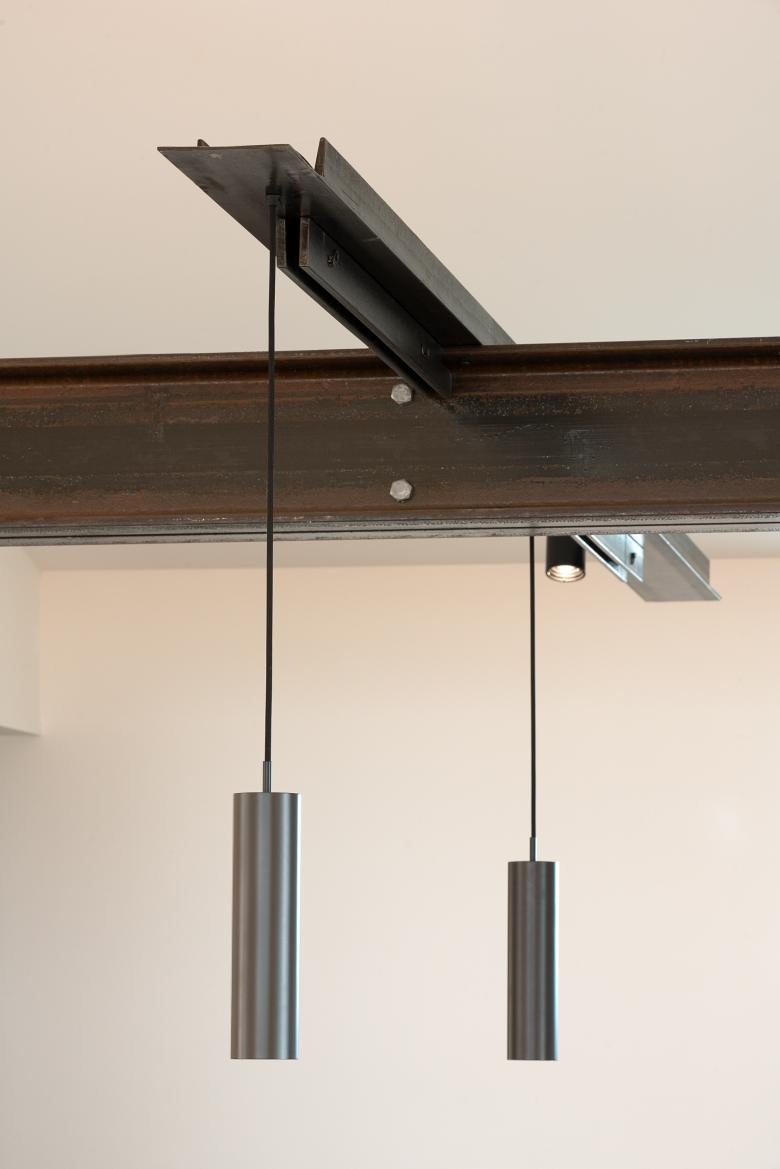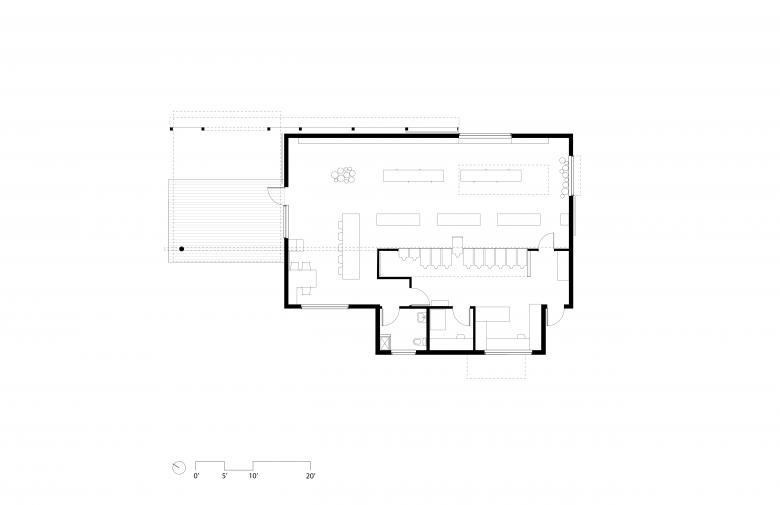US Building of the Week
Dockside Cannabis
Old buildings need not be grand or architecturally significant to be reused. Take a diminutive machine shop in Seattle's trendy Ballard neighborhood that was transformed into a cannabis shop. Graham Baba Architects answered a few questions about their transformation of an industrial building into a "a tranquil and inviting environment."
Location: 4601 Leary Way NW, Seattle, WA
Client: Dockside Cannabis
Architect: Graham Baba Architects
- Design Principal: Brett Baba
- Project Architect: Noreen Shinohara
- Project Team: Francesco Borghesi
Landscape Architect: Heather Strong
Lighting Designer: Sidney Genette Lighting Designs, Inc.
Contractor: Bennion Construction & Carpentry
Construction Manager: Patrick Bennion
Casework Manufacturer: Artifex Northwest
Building Area: 1,300 sf
Direct outreach from Dockside, a Seattle-based chain of recreational cannabis shops, when they sought to expand into a rapidly changing neighborhood, Ballard.
The project is the adaptive reuse of a one-story machine shop into a new 1,930-square-foot cannabis retail store. The shell/core and TI (tenant improvement) project retains the footprint and height of the original structure to preserve the neighborhood scale.
A new wood trellis and deck define the entry and provide a venue for outdoor gatherings and events. The exterior — composed of dark metal siding and roofing with Cor-Ten metal accents — creates a visually quiet presence on a busy thoroughfare. Ample glazing at the entry and street façade produces an inviting level of transparency, reinforcing the image of cannabis as a mainstream product. Inside, the space is bright and airy, courtesy of light-stained maple and white oak, plywood cabinetry and display cases, and a skylight inserted into the existing roof.
We wanted to reimagine cannabis retail, to turn the retail experience of cannabis inside out, to demystify the stereotype, to redefine the typical shopping experience through the creation of a tranquil and inviting environment.
The design opens up the building to exhibit its contents along a busy street. Inside, daylight filters through exposed scissor trusses overhead while polished concrete floors provide a clean, no-fuss surface below. Wood shelving and tables feature steel accents and provide a minimalist contemporary aesthetic for products housed under glass cloches and in vitrines, a display method that enables customers to peruse the merchandise while still complying with strict, no-touch city regulations.
The experience, traffic flow, fixtures, loading, security, lighting, all aspects of the design, look and feel had to be invented as the design evolved. Products are stored in efficient pull-out cabinets that can be stocked directly from the back room. When fully closed, these tall, vertical cabinets resemble a wood-paneled wall and serve as a simple backdrop for the sales counter.
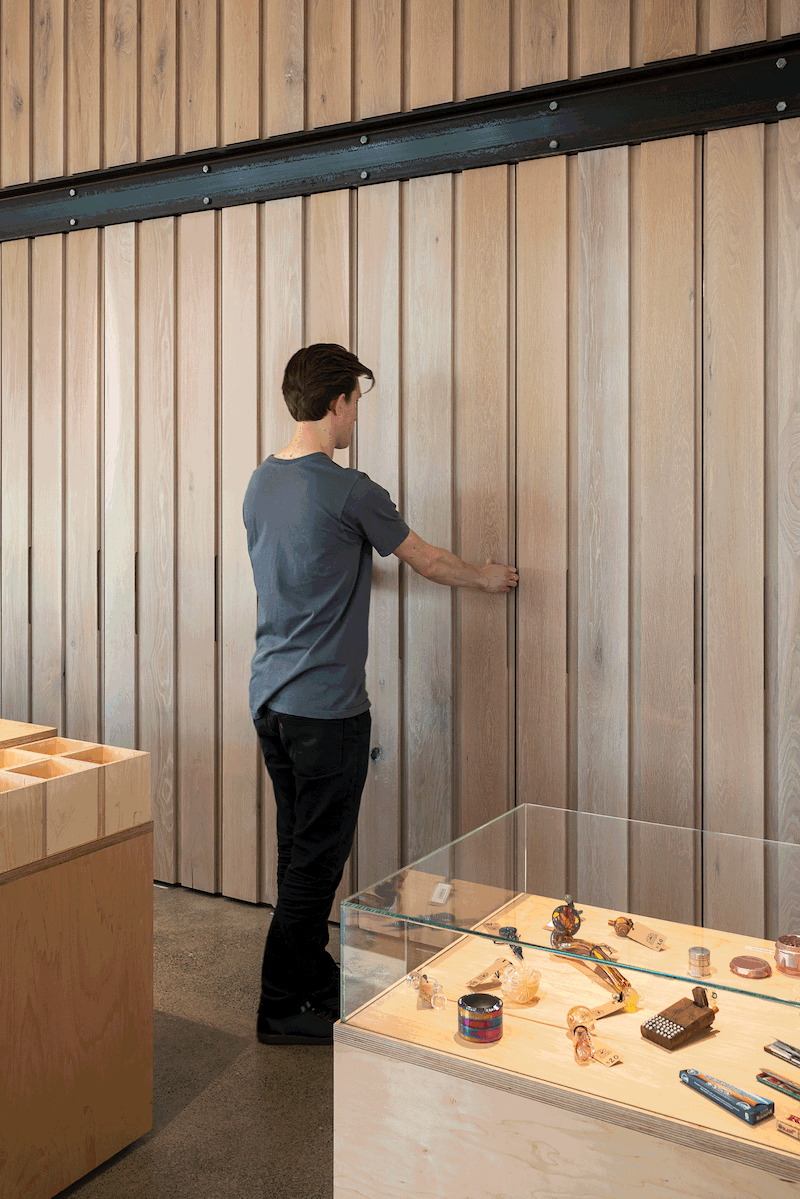
Photo: Andrew Pogue
Was the project influenced by any trends in energy-conservation, construction, or design?It was mostly influenced by changes in the laws governing cannabis sales, including how it can be displayed, secured and handled. These regulations were evolving as the project went along. Sales staff assist customers on the sales floor as they browse the products rather than from behind the counter, which is only used for the final transaction. This approach fosters a comfortable and informative conversation with staff by removing the pressure to quickly decide and make a purchase while other customers are waiting in line. Express purchases, ordered online in advance, can be quickly picked up at a table located just inside the entry. Medical consultations take place at a small desk tucked into a private corner removed from the main sales space.
Email interview conducted by John Hill.

